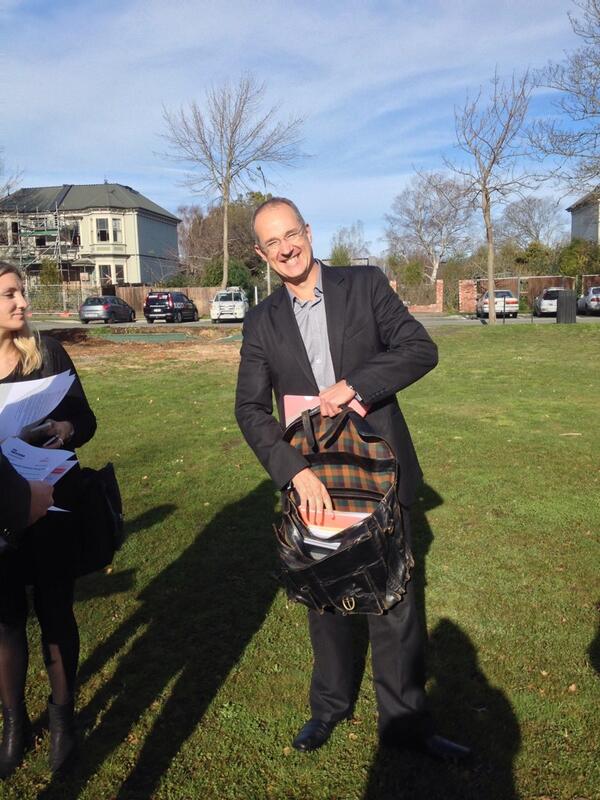They’re one of our societies most maligned groups, never asking for anything, never getting the breathless media coverage they so clearly think they deserve. But the property developers of Central Christchurch are going to the public this winter, to ask for your money to help them to realise their dreams of seeing their egos manifest in glass and concrete. Yes, that’s right – if you’re a taxpayer or a ratepayer, or even better, both! – these old, white, rich men want your money to help fund their vanity projects. That’s right, for a just the price of a cup of coffee, you could be helping one of Christchurch’s monied elite to construct the convention centre you didn’t ask for, or the retail centre you’ll never be able to afford to visit. Don’t delay, donate now!
Yesterday, as the council debated the budget, and headed towards an asset sell-off we’ve been told is a the only way to balance the books, they also found time to relieve property developers of the contributions they provide to council. This move was led – of course – by Cr Gough, the nephew of one of the main benefactors of this change, Anthony Gough:
Cr Jamie Gough, who led the push to scrap the development contributions, said effectively the council was making the central city a “DC-free zone”.
It was signalling it would “never be cheaper than it is today” to build in central Christchurch.
I’m sure Jamie knows this, so it doesn’t really need repeating, but the main reason why it is prohibitively expensive to build in central Christchurch is that the cost of land is so high, because the government used the Blueprint to buy up land and artificially limit land supply. This was what the developers wanted – but now they are complaining that the costs are too high. The Blueprint was a document that gave a small group of influential developers what they wanted (government intervention to prevent the collapse of central city land values, and thus the collapse of their property portfolios), and now they have successfully lobbied for a broke council to scrap one of their much-needed income sources.
But wait! There’s more!
Clearly feeling emboldened by the Council rolling over and letting them scratch their bellies, these brave developers are now demanding money from the Crown for delays to the Convention Centre:
City Owners Rebuild Entity (Core) spokesman Ernest Duval said the more the project was delayed, the more money would be needed. There was a natural increase in construction costs of about 8 per cent a year, he said, “It will cost more simply to build the exact same thing that was planned in 2013 because of rising construction costs.”
The government is already pouring at least $284m into something that no-one asked for and many have questioned whether we need. While there have been delays, we still haven’t seen a business case for the project. We don’t know how it’s going to operate. Instead of ploughing good money into a giant hole the size of two city blocks, it makes sense to wait. But these asshole developers know a sweet deal when they see one, and feel like they might as well try their luck at the Taxpayer ATM. For a bunch of people convinced that the free market will fix the central city, they aren’t too proud to repeatedly milk the public teat for money. These winklepickered parasites need to jump in their Maseratis and take a long drive on a long road out of this town. We will survive without them. There are plenty of good people who can rebuild this city without repeatedly blackmailing the place they’re claiming to save.

